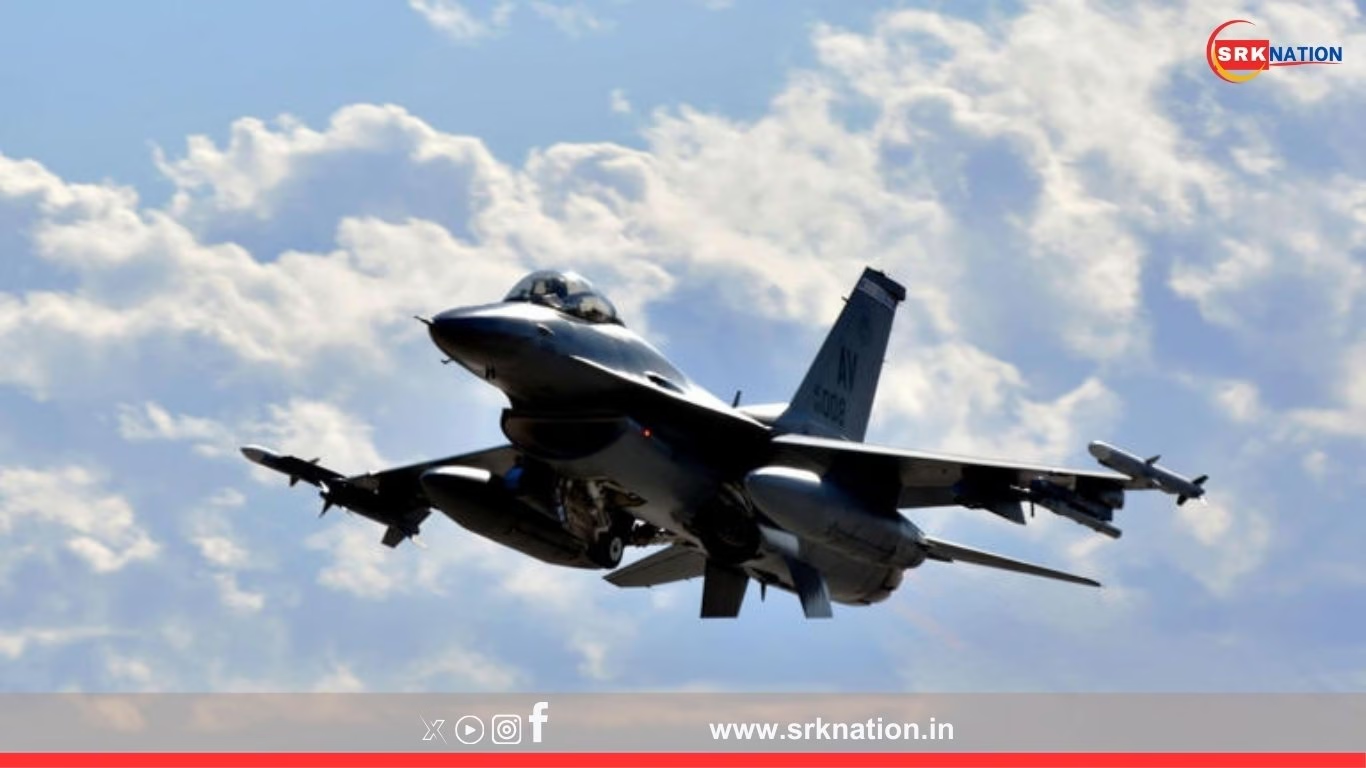In a development that has sparked fresh debates over transparency in defence relations, the United States has reportedly refused to directly answer questions regarding the whereabouts of several F-16 fighter jets allegedly lost by Pakistan during the recent Operation Sindoor, instead deflecting inquiries by stating, “We refer you to Pakistan.”
The diplomatic remark, coming amid rising geopolitical tensions in South Asia, has raised eyebrows among military analysts, who view it as a subtle yet pointed way of shifting responsibility back to Islamabad.
The Background: Operation Sindoor and the F-16 Question
Operation Sindoor, a large-scale cross-border military engagement between India and Pakistan, saw both sides claim strategic and tactical successes. Indian defence officials have repeatedly stated that Pakistan lost multiple F-16 jets during the conflict, some allegedly in air-to-air combat.
The controversy stems from whether these losses have been acknowledged, documented, or even reported to the US, which supplied Pakistan with the F-16s under specific end-use monitoring agreements. These agreements typically require recipient nations to report the status, deployment, and loss of such high-value defence assets.
US Response: Diplomatic Deflection
When pressed by journalists and defence experts on the matter, a US State Department spokesperson reportedly declined to confirm or deny the fate of the missing aircraft. Instead, the spokesperson said:
“We refer you to Pakistan for details regarding their operational military assets.”
The short statement has been interpreted as Washington distancing itself from the political and military implications of the alleged losses, effectively putting the ball back in Islamabad’s court.
Why the F-16 Question Matters
F-16 fighter jets are not just any aircraft — they are frontline multirole combat platforms capable of air superiority, ground attack, and precision strikes. The US has historically supplied them to a select set of countries, with Pakistan being one of the more controversial recipients due to its strained relations with India and alleged misuse of the aircraft in offensive operations.
The alleged loss of such jets during Operation Sindoor could have multiple implications:
- Strategic Setback: Reduces Pakistan’s air combat capabilities.
- Diplomatic Fallout: May strain US-Pakistan defence ties if losses were unreported.
- Regional Power Balance: Could temporarily tilt air superiority towards India.
Known Details vs. Unanswered Questions
| Issue | Known Facts | Unanswered Questions |
|---|---|---|
| Number of F-16s Pakistan Owns | Estimated 75 | How many were lost in Operation Sindoor? |
| US End-Use Monitoring | In place | Was the US officially notified of any losses? |
| Combat Claims | India claims multiple F-16 kills | Has Pakistan acknowledged or denied these specific losses? |
| US Position | Refers queries to Pakistan | Is the US independently verifying the claims? |
India’s Stance
Indian Air Force (IAF) officials have maintained that their pilots scored confirmed kills on Pakistani F-16s during high-intensity aerial engagements. They cite radar tracking data, debris analysis, and pilot testimonies as evidence. However, without an independent third-party confirmation, the claims remain disputed.
An IAF source stated:
“We have sufficient operational proof that F-16s were engaged and destroyed. Whether Pakistan reports this to the US or not is their internal matter — but the truth is known to both sides.”
Pakistan’s Official Silence
The Pakistani military has neither confirmed nor explicitly denied the loss of F-16s during Operation Sindoor. Instead, official statements have focused on claiming defensive success, downplaying any suggestion of material losses. This lack of transparency has only deepened speculation in defence circles.
US-Pakistan Defence Relations and the F-16 Issue
The F-16 deal between the US and Pakistan has always been politically sensitive. Under American export control laws, F-16 sales come with strict usage guidelines, including end-use monitoring visits by US officials.
If an F-16 is lost in combat or an accident, the supplier country — in this case, the US — is typically informed to maintain accurate records. Failure to do so can impact future defence cooperation.
Possible Reasons for US Deflection
Military analysts suggest several possible reasons why Washington avoided giving a direct answer:
- Preserving Diplomatic Neutrality: Avoiding taking sides publicly in the India-Pakistan conflict.
- Operational Security: Keeping sensitive defence data classified.
- Awaiting Official Pakistani Reports: The US may have yet to receive or verify the loss reports.
- Avoiding Public Embarrassment for an Ally: Public confirmation could be politically damaging for Pakistan’s military leadership.
Defence Analysts Weigh In
Security expert Lt. Gen. (Retd) Harinder Singh notes:
“By passing the query to Pakistan, the US has avoided making an on-record statement that could strain bilateral ties. However, it also signals that Washington won’t shield Islamabad from uncomfortable questions forever.”
On the other hand, US-based analyst Michael Collins points out:
“This could be a strategic pause. The US likely has intelligence on the matter but sees no benefit in revealing it now.”
Historical Context: Similar Incidents
The F-16 controversy recalls similar past events, including:
- 1999 Kargil Conflict: Alleged use of F-16s in violation of end-use restrictions.
- 2019 Balakot Airstrikes Aftermath: Disputed claims over F-16 losses during dogfights.
In each case, the US adopted a measured public position, avoiding confirmation or denial while relying on behind-the-scenes diplomatic exchanges.
What Happens Next?
If Pakistan reports any F-16 losses to the US, it could:
- Trigger replacement or compensation clauses depending on agreements.
- Lead to adjustments in military aid or arms supply terms.
- Impact future US weapons sales to Pakistan.
If no report is made and the US remains silent, the matter could fade publicly — but continue as a classified diplomatic issue between Washington and Islamabad.
Implications for Regional Security
The ambiguity over the F-16 losses serves as a reminder of the fragile security environment in South Asia. Even modern weapon systems become points of political contention, and transparency is often sacrificed for strategic leverage.
For India, the situation reinforces the need for:
- Self-reliance in defence production
- Advanced aerial surveillance and verification tools
- Stronger diplomatic engagement with allies to counter denial narratives
Data Overview: South Asia’s Fighter Jet Inventory (Estimated)
| Country | Fighter Type | Estimated Numbers | Source of Supply |
|---|---|---|---|
| India | Su-30MKI | 260 | Russia / India (HAL) |
| India | Rafale | 36 | France |
| Pakistan | F-16 | 75 | US |
| Pakistan | JF-17 | 125 | China / Pakistan |
| Pakistan | Mirage III/V | 90 | France |
Conclusion
The US’s “We refer you to Pakistan” statement over the alleged loss of F-16s in Operation Sindoor is a classic diplomatic sidestep, ensuring Washington avoids entanglement in the latest India-Pakistan aerial conflict narrative. However, the lack of clarity leaves defence watchers with more questions than answers — and ensures that the F-16 mystery will continue to hover over South Asia’s already tense skies.
Disclaimer: This article is based on defence reports, expert commentary, and publicly available information. It does not claim independent verification of combat losses and is intended solely for informational purposes.











